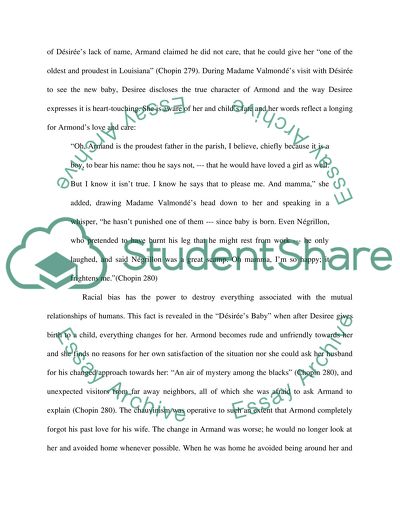Cite this document
(“Victims of Chauvinism based on comparative analysis of Dsires Baby by Essay”, n.d.)
Victims of Chauvinism based on comparative analysis of Dsires Baby by Essay. Retrieved from https://studentshare.org/literature/1464062-victims-of-chauvinism-based-on-comparative-analysis-of-dsires-baby-by-kate-chopin-and-the-yellow-wallpaper-by-charlotte-perkins-gilman
Victims of Chauvinism based on comparative analysis of Dsires Baby by Essay. Retrieved from https://studentshare.org/literature/1464062-victims-of-chauvinism-based-on-comparative-analysis-of-dsires-baby-by-kate-chopin-and-the-yellow-wallpaper-by-charlotte-perkins-gilman
(Victims of Chauvinism Based on Comparative Analysis of Dsires Baby by Essay)
Victims of Chauvinism Based on Comparative Analysis of Dsires Baby by Essay. https://studentshare.org/literature/1464062-victims-of-chauvinism-based-on-comparative-analysis-of-dsires-baby-by-kate-chopin-and-the-yellow-wallpaper-by-charlotte-perkins-gilman.
Victims of Chauvinism Based on Comparative Analysis of Dsires Baby by Essay. https://studentshare.org/literature/1464062-victims-of-chauvinism-based-on-comparative-analysis-of-dsires-baby-by-kate-chopin-and-the-yellow-wallpaper-by-charlotte-perkins-gilman.
“Victims of Chauvinism Based on Comparative Analysis of Dsires Baby by Essay”, n.d. https://studentshare.org/literature/1464062-victims-of-chauvinism-based-on-comparative-analysis-of-dsires-baby-by-kate-chopin-and-the-yellow-wallpaper-by-charlotte-perkins-gilman.


